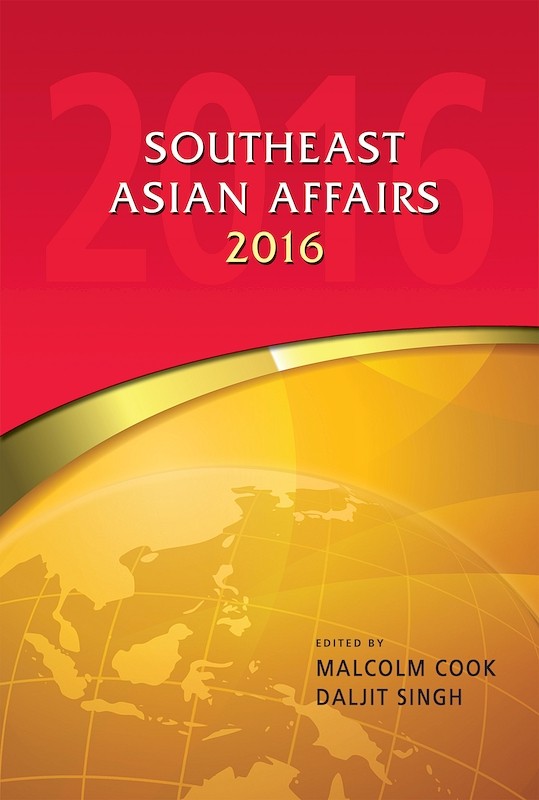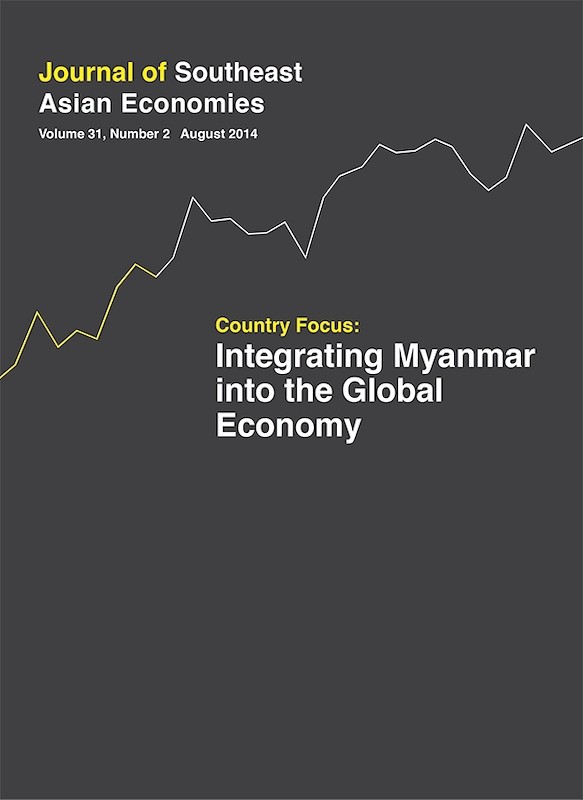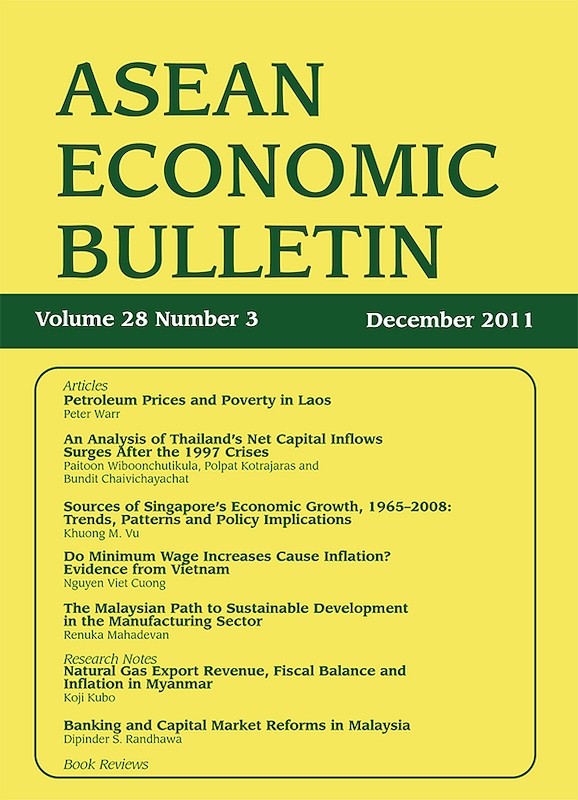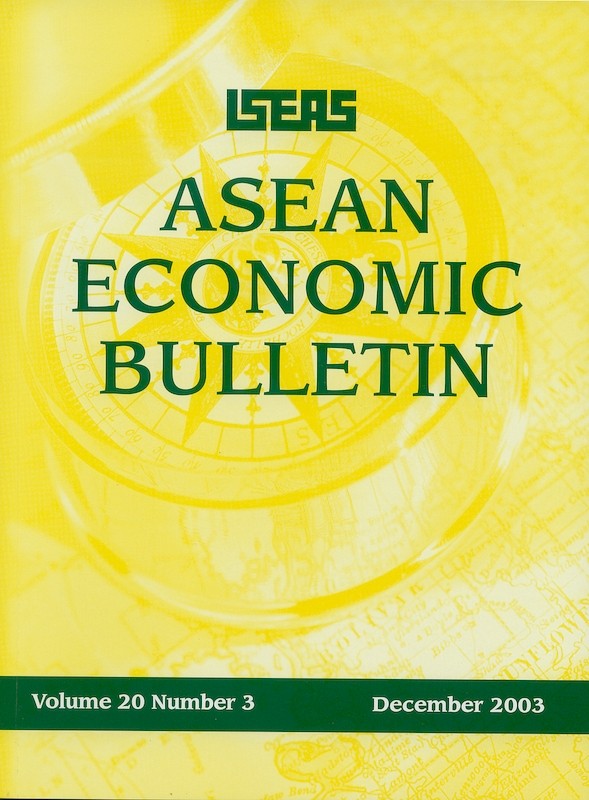Journal of Southeast Asian Economies Vol. 35/2 (Aug 2018). Special Issue on "The Indonesia Economy in Transition: Policy Challenges in the Jokowi Era and Beyond"
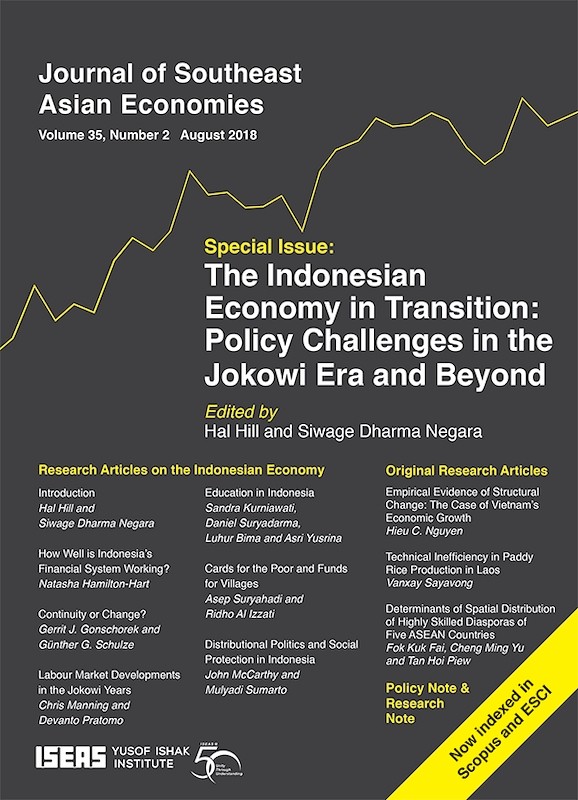
Date of publication:
August 2018
Publisher:
ISEAS – Yusof Ishak Institute
Number of pages:
216
Code:
AE35/2
Contents
-
Journal of Southeast Asian Economies Vol. 35/2 (Aug 2018). Special Issue on "The Indonesia Economy in Transition: Policy Challenges in the Jokowi Era and Beyond"
[Whole Publication, ISSN: 23395206] -
Preliminary pages
- RESEARCH ARTICLES ON THE INDONESIAN ECONOMY IN TRANSITION
-
1. Introduction: The Indonesian Economy in Transition — Policy Challenges in the Jokowi Era and Beyond, by Hal Hill, Siwage Dharma Negara, authors
-
2. How Well Is Indonesia’s Financial System Working?, by Natasha Hamilton-Hart, author see abstractIndonesia’s banks and financial markets have developed considerably over the twenty years following the country’s devastating financial crisis of 1997–98. Government policy has balanced a variety of objectives involving the financial sector, such as seeking growth, financial inclusion, and stability. Recent data shows that financial stability indicators are mostly robust, suggesting a relatively resilient banking sector. Also, interventionist policies under the government of President Joko Widodo, aimed at promoting financial inclusion and growth, have so far not been excessively costly. However, a degree of inefficiency may be the price to pay for financial stability. This article explores some of the policy and structural sources of inefficiency in the banking sector as they have developed over recent years. It shows that Indonesia’s banking sector is structurally segmented, with limited competition among the largest banks and a competitive — but constrained — mid-size bank segment. Foreign takeovers of existing banks are a possibility, but that does not necessarily improve banking sector performance. Alternative sources of finance and vehicles for private saving in Indonesia may reduce the impact of the inefficiency.
-
3. Continuity or Change? Indonesia’s Intergovernmental Fiscal Transfer System under Jokowi, by Gerrit J. Gonschorek, Günther G. Schulze, authors see abstractThis paper provides a systematic overview of the intergovernmental fiscal transfer system in Indonesia. It describes the size, allocation mechanism, and economic rationale (if any) of the different transfer schemes. Furthermore, the study points out major changes in the institutional set-up and in the relative magnitudes of the transfers effected by the Joko “Jokowi” Widodo administration. This allows us to assess the extent to which the current administration has shifted the policy stance on (fiscal) decentralization in the country. We critically evaluate the effectiveness and efficiency of the existing system, including the newly implemented reforms.
-
4. Labour Market Developments in the Jokowi Years, by Chris Manning, Devanto Shasta Pratomo, authors see abstractThis study reviews the developments in Indonesia’s labour markets during the Joko “Jokowi” Widodo presidency. It is set in the context of changing employment, wages and productivity since the Asian Financial Crisis and under the previous (Yudhoyono) government. We argue that Jokowi’s approach as a former businessman — aided by his like-minded vice-president, Jusuf Kalla — together with macroeconomic developments, has been positive for employment and wages, although less so for labour productivity. Formal sector jobs have continued to grow rapidly and recover somewhat in manufacturing, while the downward trend in unemployment has been sustained. Reform of the minimum wage setting processes has not endeared the president to vocal union groups, but appears to have moderated minimum wage increases close to the main industrial centres. At the same time, a wider wage gap has emerged between permanent and casual workers, which could have contributed to the rising inequality in the country. In an attempt to boost productivity, the current administration has put considerable effort into improving skills that are in demand. However, progress is likely to be slow mainly because of the low quality of basic schooling.
-
5. Education in Indonesia: A White Elephant?, by Sandra Kurniawati, Daniel Suryadarma, Luhur Bima, Asri Yusrina, authors see abstractAfter successfully improving access to education in the early 1990s through virtually universal primary school completion and similar positive trends at the senior secondary level in 2005, Indonesia began investing heavily in improving learning outcomes. For almost a decade, the country has been spending about a fifth of its public funds on education. In particular, teachers have received significant salary increases through a certification programme. This paper provides a long-run overview of numeracy and literacy among fifteen-year-old Indonesians using an international test, spanning from 2003 until 2015. It is found that improvements in learning levels are too small to justify the substantial investments that the country has undertaken. The government’s major education policies have not produced the expected results. It is argued that without adding accountability measures that focus on learning outcomes, there is little chance for the investments to provide noteworthy returns in the form of remarkably improved learning outcomes.
-
6. Cards for the Poor and Funds for Villages: Jokowi’s Initiatives to Reduce Poverty and Inequality, by Asep Suryahadi, Ridho Al Izzati, authors see abstractWhen President Joko “Jokowi” Widodo took office in 2014, Indonesia was facing stagnating poverty and high inequality. To address these problems, he quickly introduced several initiatives, mainly in the form of social assistance programmes which gave the poor access to education and health services, as well as food and cash transfers, and grants for villages as mandated by the Village Law. This paper assesses the implications of these initiatives on poverty and inequality, by correlating economic growth with real per capita household consumption growth by quintile at the district level. The results indicate that economic growth has become less pro-poor during the first three years of the Jokowi government. This is indicated by lower growth elasticity of consumption of the poorest 20 per cent of the population, while those of the middle quintiles have increased significantly and that of the richest 20 per cent remains the highest. This suggests that Jokowi’s poverty and inequality reduction strategy is not sufficient. A complementary approach to connect the poor to economic growth — through job creation and income generation — is needed. Furthermore, the findings also show that it is important to pay more attention to assist the livelihood of the poor who live in Java as well as the urban poor.
-
7. Distributional Politics and Social Protection in Indonesia: Dilemma of Layering, Nesting and Social Fit in Jokowi’s Poverty Policy, by John McCarthy, Mulyadi Sumarto, authors see abstractSocial protection policies involve distributional politics and practices that pose significant challenges. Focusing on Indonesia, where such policies are rapidly expanding, this paper discusses two programmes most relevant to the poor — the rice for welfare (Rastra) scheme and the conditional cash transfer (PKH) programme. We elaborate on the tensions between a “layered” approach to social protection (where new institutional arrangements are placed on top of, or alongside existing ones) and a “nested” approach (where community-level distribution principles are located within wider state arrangements). The paper concludes that Indonesia is still looking for a welfare regime that is compatible with its political-economic situation and cultural practices. This study argues that, to improve the “fit” of social protection policies, policymakers will need to take a more polycentric approach, allowing the state-supported targeting logic to accommodate the social ethics and moral concerns of the country’s rural poor.
- ORIGINAL RESEARCH ARTICLES
-
8. Empirical Evidence of Structural Change: The Case of Vietnam’s Economic Growth, by Hieu Nguyen, author see abstractThis study examines the patterns of structural change in economic development by drawing insights from the case of Vietnam. Empirical evidence from literature indicates that developing countries are likely to gain from structural transformation to boost the growth of labour productivity. While most East Asian countries have enjoyed significant structural transformation bonus, many African and Latin American economies, often endowed with rich natural resources, have benefited negligibly from this process. Vietnam, in particular, has gained substantially from its growth promoting structural transformation, contributing to nearly half of overall labour productivity improvement between 1990 and 2013. This structural change effect was modest in 1990–2000, strongest in 2000–07, and declining (but still significant) in 2007–13. The process has been associated with rapid expansion of the manufacturing and service sectors, change in export composition towards higher share of medium- and high-tech manufactures, and integration into global value chains. The expected slowdown in structural change suggests that the country would have to rely more on within-sector productivity improvement to enhance growth.
-
9. Technical Inefficiency in Paddy Rice Production in Laos, by Vanxay Sayavong, author see abstractThis study uses the stochastic production frontier and inefficiency models to examine paddy rice production in Laos and identify the factors hindering its efficiency. Based on cross-sectional data from 343 farm households in the country, key inputs such as farmland, labour, capital, water supply and other expenses are analysed in the production model. Similarly, the impact of specific factors like farmers’ education, soil quality, credit access, extension services, and environmental conditions are examined in the inefficiency model. The results show that the potential of 77.75 per cent of Laos’ paddy rice output has been realized and that knowledge transfer among farmers — via rice association membership and training — is the most effective way to improve efficiency. Another important finding is that public extension services and disaster management mechanisms need more attention.
-
10. Determinants of Spatial Distribution of Highly Skilled Diasporas of Five ASEAN Countries, by Fok Kuk Fai, Cheng Ming Yu, Tan Hoi Piew, authors see abstractHighly skilled diasporas are increasingly being recognized as valuable transnational resources for the economic development of their respective home countries. This study investigates the macro-level forces that have driven the spatial distribution of the highly skilled diasporas of five ASEAN countries, namely Indonesia, Malaysia, the Philippines, Singapore and Thailand. In this paper, seemingly unrelated regressions (SUR) are developed, based on the augmented gravity model of migration. The findings reveal that diaspora stocks, market size, and development level in the destination country are significant determinants. To benefit from the heterogeneity of diasporic resources, the ASEAN-5 countries should establish collaborative mechanisms to mobilize their collective pool of diasporas for economic development.
- POLICY NOTE
-
11. Robust Measures of Core Inflation for Vietnam, by Sanjay Kalra, Bui Thi Trang Dzung, authors see abstractThe paper develops robust measures of core inflation for Vietnam that can be used in policy-making. These core inflation measures (CIMs) are based on an analytical evaluation of the inflation process in the country, and use a filtering approach to narrow down potential measures that satisfy certain empirically desirable criteria. The study finds that commonly used exclusion-based measures (EBMs) do not perform well against these empirical criteria; trimmed mean measures (TMMs) do better. Among TMMs, “one trim does not fit all periods” — periods of high and variable inflation require larger trims, and vice versa. The econometric computer programmes employed in the paper allow for quick and timely replication of CIMs as new data become available, making them valuable tools for the State Bank of Vietnam. These procedures and programmes can also be helpful to other central banks in their policy making process.
- RESEARCH NOTE
-
12. The Performance of Indonesia’s Public Credit Guarantee Scheme for MSMEs: A Regional Comparative Perspective, by Tulus Tambunan, author see abstractAccess to finance has been a key constraint for Indonesia’s micro, small and medium enterprises (MSMEs) that lack tangible assets to be used as collateral. Consequently, credit guarantee schemes (CGSs) are important instruments to meet MSMEs’ financial needs. This paper examines the effectiveness of the KUR (community business credit), a partial public CGS in Indonesia, by comparing it with similar schemes in other ASEAN member states (AMS). The findings suggest that the KUR programme, despite its limited coverage, has been quite effective throughout the country. Some of the critical factors behind its success include: wide dissemination of the programme; simplicity of the application procedure; full participation and support from banks; and strong coordination between all stakeholders.


